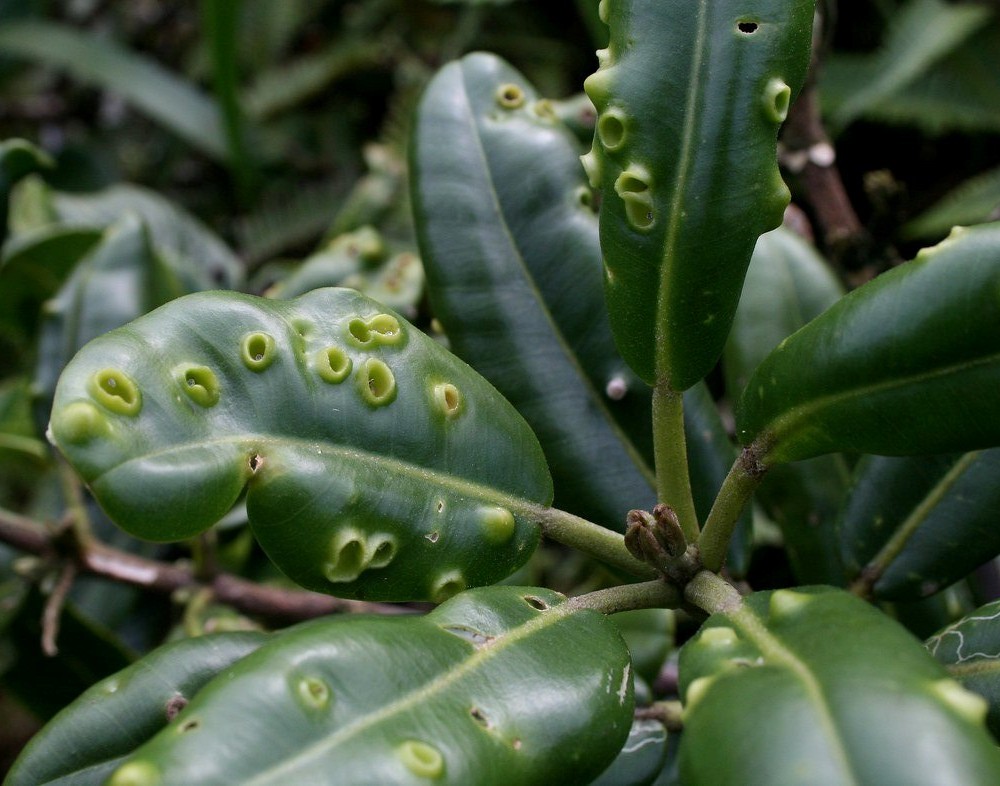Kukaemoa
(Melicope clusiifolia)

Description
Melicope is a genus of about 240 species of shrubs and trees in the family Rutaceae, occurring from the Hawaiian Islands across the Pacific Ocean to tropical Asia, Australia and New Zealand. Plants in the genus Melicope have simple or trifoliate leaves arranged in opposite pairs, flowers arranged in panicles, with four sepals, four petals and four or eight stamens and fruit composed of up to four follicles. Plants in the genus Melicope have simple or trifoliate leaves arranged in opposite pairs, or sometimes whorled. The flowers are arranged in panicles and are bisexual or sometimes with functionally male- or female-only flowers. The flowers have four sepals, four petals and four or eight stamens. There are four, sometimes five, carpels fused at the base with fused styles, the stigma similar to the tip of the style. The fruit is composed of up to four follicles fused at the base, each with one or two seeds. Melicopes are foodplants for various animals, mainly invertebrates. Caterpillars of the Ulysses butterfly (Papilio ulysses) are fond of M. elleryana. Caterpillars of Thyrocopa moths have been found on M. clusiifolia. The larvae of some belid weevils from the genus Proterhinus also feed on Melicope although they prefer unhealthy, dying or dead specimens. The plants of some species may not be safe for humans. The nectar of wharangi (M. ternata) is known to yield toxic honey that may kill whoever eats it.
Taxonomic tree:







